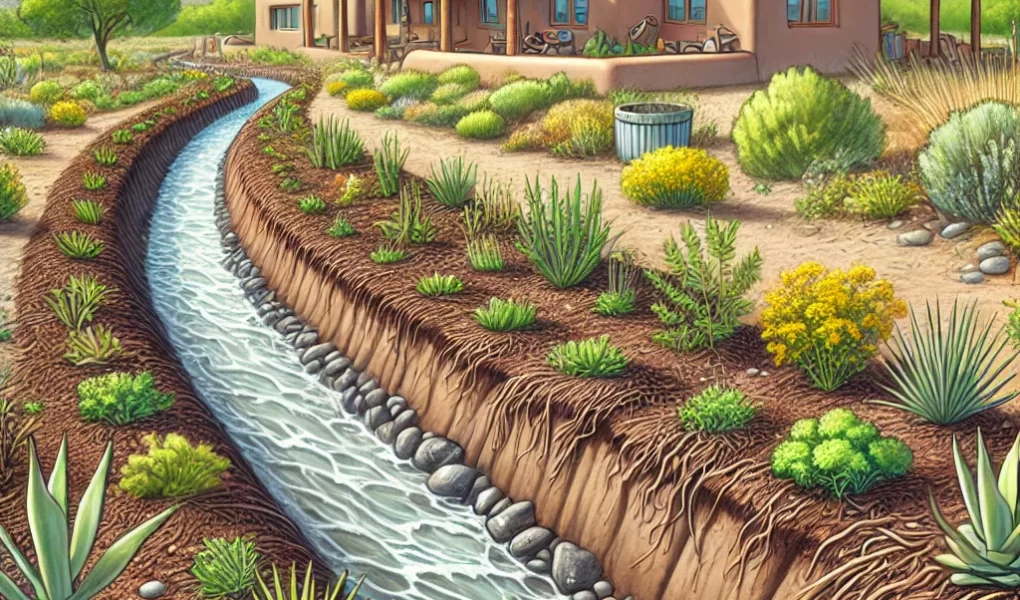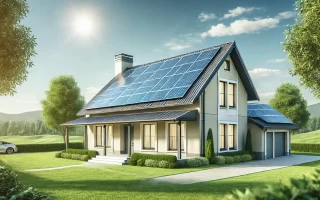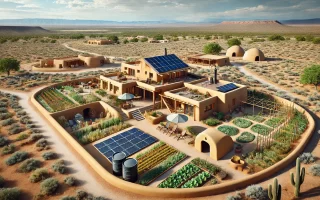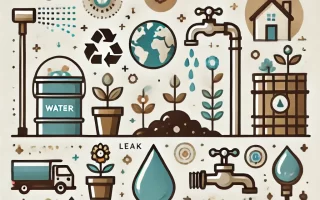Turning Dust into Life: Our Plan to Restore the Soil
The land we dream of transforming into a self-sufficient, off-grid homestead is more than just a space for sustainable living—it’s a mission to restore and regenerate the earth beneath our feet.
But before we can build homes, plant food, and harvest rainwater, we must protect and rebuild the soil. The high-desert environment presents unique challenges—strong winds, sudden downpours, and dry, compacted soil make erosion a serious threat. If we don’t address it first, anything we build or grow will struggle to survive.
So, how do we turn barren, eroded land into a lush, productive oasis?
It starts with working with nature, not against it. 🌱
Step 1: Slow, Spread, and Sink the Water with Swales
One of the biggest causes of soil erosion is water runoff. When rain falls in dry environments, it often rushes downhill, taking precious topsoil with it. To prevent this, we’ll use swales—shallow trenches dug on contour to capture, slow, and absorb water into the ground.
✅ How Swales Work: Instead of water running off and washing away soil, it seeps into the land, hydrating deep below the surface.
✅ Why It Matters: Over time, this helps replenish groundwater, improve soil fertility, and support plant life—turning dry earth into a thriving ecosystem.
✅ Our Plan: We’ll plant mulch and deep-rooted vegetation along the swales to further stabilize the soil and increase water retention.
💡 Fun Fact: Swales have been used for centuries in permaculture and indigenous farming to transform dry landscapes into fertile lands!
Step 2: Strengthening the Land with Keyline Plowing
If soil is compacted, even the best water-saving techniques won’t work. That’s where keyline plowing comes in.
✅ How It Works: A keyline plow creates shallow grooves in the earth, breaking up compacted soil without turning it over (which would disturb beneficial microbes).
✅ Why It Matters: These grooves guide water deep into the ground, distributing moisture evenly and encouraging plant growth—instead of letting water pool and erode the land.
✅ Our Plan: Once the soil structure is improved, we can begin growing cover crops to further regenerate the land.
Step 3: The Power of Plants – Cover Crops & Green Manure
Bare soil is vulnerable soil—and that’s exactly what erosion loves. To stop wind and rain from stripping the land, we’ll plant cover crops, which act like a protective blanket over the soil.
✅ How Cover Crops Help: Their deep roots hold the soil together, while their leaves provide shade and moisture retention.
✅ What We’ll Plant: A mix of clover, rye, and vetch—plants that fix nitrogen, improve soil fertility, and enrich organic matter.
✅ What Happens Next? Once mature, these crops will be tilled back into the soil, acting as green manure to feed beneficial microbes and build rich, fertile ground.
From dust to living soil—this is nature’s way of healing itself! 🌿
Step 4: Windbreaks & Native Vegetation for Long-Term Stability
In the high desert, harsh winds can dry out the soil, strip away topsoil, and stunt plant growth. To combat this, we’ll establish windbreaks—rows of hardy, drought-resistant trees and shrubs that act as a natural shield.
✅ Best Trees for Windbreaks: Mesquite, Acacia, and desert-adapted fruit trees.
✅ What They Do: Reduce wind speed, hold moisture, and create a microclimate that supports other plants.
✅ Bonus Benefit: These trees provide shade, helping reduce water loss and keep the soil cool—critical for a desert homestead.
Underneath these trees, we’ll plant native grasses and deep-rooted perennials, ensuring long-term soil stability and a thriving ecosystem.
Step 5: Earthworks – Berms, Gabions & Rock Dams
In areas that are especially prone to runoff and erosion, we’ll add earthworks to control the flow of water and prevent soil loss.
✅ Berms (Raised Soil Ridges): Placed strategically to redirect water flow and prevent erosion.
✅ Gabions (Rock-Filled Wire Cages): These trap soil and slow down fast-moving water, allowing sediment to settle instead of being washed away.
✅ Rock Dams: Used in gullies and erosion-prone areas to restore damaged land and promote vegetation regrowth.
With these structures in place, water will stay where it belongs—nourishing the land, not washing it away.
The Big Picture: Why This Matters
Erosion control isn’t just about preventing damage—it’s about restoring balance to the land and creating an environment where life can thrive.
By implementing swales, keyline plowing, cover crops, windbreaks, and earthworks, we’re setting the foundation for a resilient, self-sustaining homestead.
The Expected Results:
✅ More Water Absorption: Instead of running off, rainwater will soak into the soil, replenishing groundwater.
✅ Stronger, Healthier Soil: Deep-rooted plants will hold everything together, reducing erosion and increasing fertility.
✅ Thriving Vegetation & Crops: With stable soil and more moisture, our homestead will support a sustainable food system.
What starts as dry, eroded land will evolve into a lush, regenerative ecosystem—proving that even the harshest climates can be restored with the right techniques.
Follow Our Journey & Be Part of the Change!
This is just the beginning. As we take these first steps toward building a sustainable homestead, we’ll be documenting everything—our successes, our challenges, and our lessons learned.
💚 Follow us on Instagram & Pinterest for real-time updates and behind-the-scenes progress!
🎥 Subscribe to our YouTube channel to see these erosion control techniques in action.
💬 Join our private Facebook group to connect, learn, and share your own sustainability journey.
🌍 Together, we can transform the land—one step at a time.
🚜 Let’s build a Better World Blueprint—one acre at a time! 🌿




